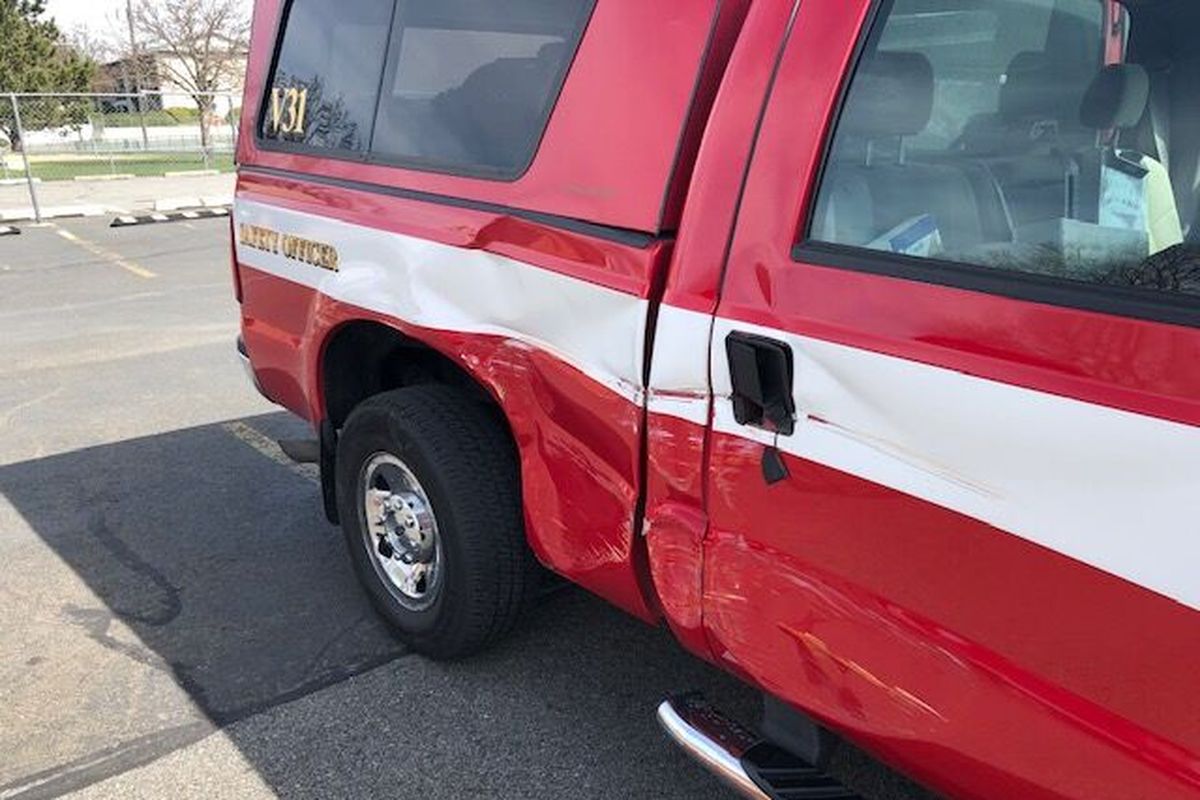SVFD officials urge motorists to yield lane to first responders during emergencies

The Spokane Valley Fire Department has been using social media recently in an attempt to remind people to move over for fire trucks responding to an emergency or parked on the side of Interstate 90.
Battalion Chief Rob Proctor has had a couple of close calls. A couple of years ago he was driving his command truck, a red pickup, while responding to a report of a car in the ditch on I-90. It had snowed recently, and there was snow on the side of the road. Proctor pulled over onto the shoulder, then checked his mirror before he got out of his truck, as he always did.
He saw a semitruck barreling down the right lane at 65 miles per hour just behind him. It passed by no more than a foot from his side mirror, Proctor said. If he had opened the door and gotten out without looking, he likely would have been hit.
“There was no one on the other side of him,” he said. “He just didn’t move over. Luckily, it wasn’t a bad thing. It was close to a bad thing.”
Last year two command trucks, one of them Proctor’s, were rear-ended at high speed on I-90 within a month of each other. Both had been parked on the freeway, lights flashing, as firefighters responded to traffic accidents in the travel lane.
Proctor was not in his truck when it was hit, and no one was injured. “They did what they were supposed to do,” Proctor said of the trucks. “They stopped the vehicles from entering the scene.”
Not everyone is so lucky. In October 2020, a Washington State Patrol vehicle was hit from behind on I-90 near Barker. The trooper inside had to be cut from his vehicle by Spokane Valley firefighters before being taken to a local hospital.
“It seems like people are not moving over or giving us space,” he said. “It does not seem as good as it used to be.”
Proctor said he’s not sure why.
Department spokeswoman Julie Happy said the department has had to deal with a wide variety of issues when it comes to people not pulling over when required.
“We have had people drive by and try to take pictures of our scenes, and they have clipped the vehicles of those responding,” she said. “We also experience cars pull over and then not check for more emergency response personnel and so they pull out in front of our other vehicles.”
The main rule when on surface streets is to yield to the right and pull over when an emergency vehicle approaches. On the freeway, drivers should change lanes so that there is at least one empty lane between them and emergency responders.
When responding to emergency calls, the fire department is assisted by a system called Opticom, which turns traffic lights green at the push of a button when fire trucks approach an intersection. However, not all emergency vehicles, such as ambulances, have the system. That can lead to some confusion when an ambulance approaches an intersection with its lights and sirens on, but all lanes are full of stopped traffic.
Proctor said he hesitates to recommend that people run the red light to get out of the way, particularly if they are trying to make a left turn, but in some circumstances it may be possible if people are careful.
“I understand they don’t want to push through the red light,” he said. “Don’t just go. Make sure side traffic is stopped, which it should be.”
Drivers should pull over and stop even if the emergency vehicle is coming from the opposite direction, Proctor said. The vehicle may need to take a left turn onto a street or into a driveway, he said. “Just because you’re not in that lane doesn’t mean you shouldn’t stop,” Proctor said.
But whatever drivers do, they should not come to a stop in front of an emergency vehicle, blocking it. “Just drive like we’re responding to one of your loved ones,” he said.
———
Correspondent Nina Culver can be reached at nculver47@gmail.com.